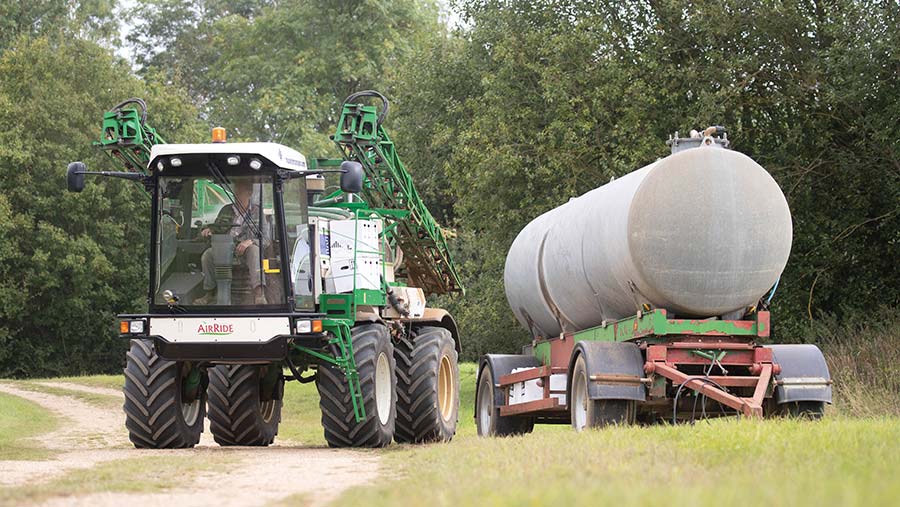Pre-em herbicide spray trial reveals best nozzle choice
 © Tim Scrivener
© Tim Scrivener Selecting the right combination of nozzle, adjuvant and water volume is key to maximising pre-emergence herbicide efficacy and staying on the right side of the rules this autumn.
One key factor in achieving good coverage is water volume and the narrow weather windows seen with later drilling means some farmers are tempted to use lower water volumes, such as 100 litres/ha, to maximise work rates.
See also: Can climate change champion biochar match its potential?
However, Agrii trials co-ordinator David Felce points to an Agrii trial showing that this volume only gave 55% control of blackgrass, even when using a mix of Luxinum Plus (cinmethylin) + Orient (pendimethalin + picolinafen).
Increasing water volume to 200 litres/ha improved control to 83% using drift-reduction technology (DRT)-compliant nozzles and 94% with non-compliant Defy 3D flat fans.
David points to the increasing number of farmers using support bowsers to enable in-field mixing, as this can help nullify the lost time of using a greater volume. “You are also gaining 28% more control.”
Nozzle type
Looking at nozzle type, the best control came from a Defy 3D nozzle that has a better droplet size, giving control of 93%. But the problem is staying legal with the complex buffer zone rules.
“Where you are not using DRT, you have to observe a 30m buffer zone from a watercourse. And even with DRT, there is still a buffer zone of 6, 12 or 18m as specified on the label of certain products.”
Therefore, farmers need to use three-star Lerap nozzles on the first 30m, outside of the buffer zone stated on the label. However, three-star nozzles can reduce effectiveness, and are often used outside their three-star pressure rating.
So Agrii has looked at using four-star 90% reduction nozzles, as these tend to have a three-star rating at typical field pressures, usually 2.1 to 4.0 bar. But what sort of job do they do?
Agrii carried out trials with the latest chemistry using an adapted tractor-mounted sprayer containing a mix of Luxinum Plus + Orient.
Applied at 200 litres/ha and with flat fan nozzles (best practice), blackgrass control was more than 90%. However, when applied under DRT, control slipped to 83%.
Adding the mineral oil adjuvant Backrow got this back up to 89% control. David explains that the product helps to normalise droplet size and improve retention in the soil surface layer.
Halving the water volume saw control slip to 55%, although adding the adjuvant brought it back to 76%.
In conclusion, the trial showed that adopting DRT doesn’t have to mean control is compromised, as it was still possible to achieve nearly 90% control with Luxinum Plus + Orient.

